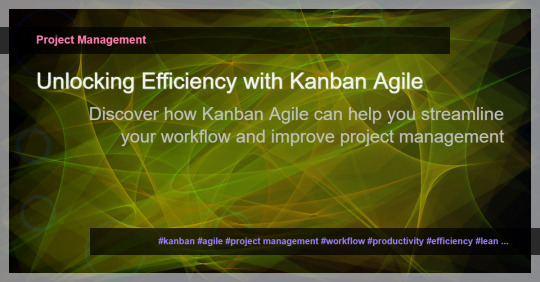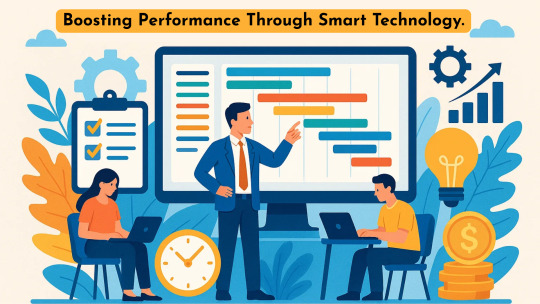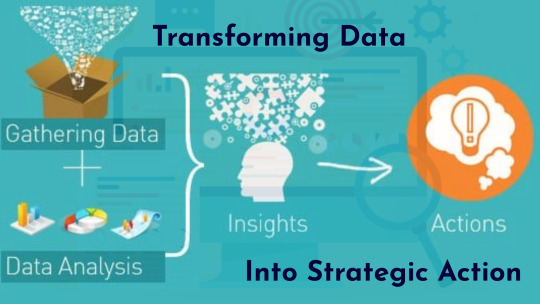#Agile project management workflow
Explore tagged Tumblr posts
Text
Mastering Agile Workflows: A Guide to Effective Agile Project Management
Unlock the full potential of Agile project management with our comprehensive guide on Agile workflows. Learn how to streamline your processes, enhance team collaboration, and deliver projects more efficiently using Agile methodologies. Discover the best practices for implementing an Agile workflow that adapts to your team's needs and drives success. For more insights, visit Mastering Agile Workflows.

0 notes
Text
#Business Analyst Tools#BA Toolbox#Requirements Gathering#Business Analysis Templates#Process Modeling#Workflow Documentation#Stakeholder Management#Digital Transformation Tools#Business Analyst Resources#BA Frameworks#GQAT Tech BA Solutions#Agile BA Tools#Business Process Optimization#Productivity Tools for BAs#BA Best Practices#Proven Excellence#GQAT Tech Success Stories#QA Case Studies#Quality Assurance Achievements#Software Testing Results#Client Satisfaction#QA Best Practices#Project Excellence#Business Impact QA#Software Testing Portfolio#GQAT Testimonials#QA Metrics & Reporting#Trusted QA Services#Real-world QA Results#Quality Assurance Leadership
0 notes
Text
#AI applications in agile and hybrid project management#Smart automation tools for efficient workflow execution#Real-world case studies of AI-driven project success#Spotify
0 notes
Text
Revolutionising Estimations with AI: Smarter, Faster, and More Reliable Predictions
Revolutionising estimations with AI transforms project planning by enhancing accuracy and reducing uncertainty. Unlike traditional methods prone to bias, AI-driven estimations leverage historical data and predictive analytics for more reliable forecasts.
Revolutionising estimations with AI is transforming how teams predict timelines, allocate resources, and improve project planning. Traditional estimation methods often rely on human intuition, which can introduce biases and inconsistencies. AI offers a data-driven approach that enhances accuracy, reduces uncertainty, and allows teams to focus on delivering value. If you’re interested in…
#agile#AI#automation#data-driven decisions#Efficiency#estimations#Forecast.app#forecasting#Jira#LinearB#machine learning#predictive analytics#Project management#risk management#software development#workflow optimization
0 notes
Text
What is Agile Software Development Methodology?
Learn about Agile software development methodology, its principles, benefits, and how it enhances flexibility, collaboration, and faster delivery.
In today’s fast-paced tech world, Agile software development methodology has become the backbone for delivering high-quality software solutions that adapt quickly to changing market demands and project requirements. This blog will explore Agile methodology in depth, highlighting its importance, principles, and the benefits it offers to businesses and development teams alike. Why is Agile…
#Agile Development#Agile Methodology#Agile Principles#Agile Process#Agile Workflow#Digital Transformation#Project Management#Scrum#Software Development#Software Engineering
0 notes
Text
#BugHerd#Website feedback tool#Project management tool#Web development process#Streamline web development#Bug tracking tool#Collaboration tool#Agile development#Web design feedback#User experience (UX)#User interface (UI)#Developer tools#Design feedback#Team collaboration#Productivity tools#Efficient workflow#Quality assurance (QA)
0 notes
Text
Demystifying Kanban Agile: Streamline Your Workflow for Efficient Project Management
Demystifying Kanban Agile: Streamline Your Workflow for Efficient Project Management Do you find yourself overwhelmed with managing complex projects? Are you constantly struggling to maintain transparency and accountability within your team? If so, it’s time to consider Kanban Agile as your go-to project management methodology. Kanban Agile combines the principles of Kanban and Agile…

View On WordPress
#agile#efficiency#kanban#kanban agile#lean#productivity#project management#scrum#software development#technologies#workflow
0 notes
Text
Clickup Reviews-2023
ClickUp is an all-in-one productivity and project management tool that allows users to manage tasks, docs, chat, goals, and more. It is designed to simplify work and help users get more done by providing project management that adapts to team's needs, real-time chat, and real-time goal tracking. ClickUp offers over 20 real-time views that allow users to tackle work from any angle, including List, Board, Calendar, and more. It also offers 35+ ClickApps that can be customized to tackle any project or task, including subtasks, Sprint Points, Relationships, and more.
ClickUp can be accessed on any device, including mobile, desktop, voice assistants, and more, allowing users to get work done from anywhere. It also offers native and third-party integrations with other tools, allowing users to keep everything in one place, including team calendars, messaging apps, cloud storage, and more. Additionally, ClickUp offers hundreds of Automations that can be used to eliminate busywork and focus on what matters, including automatically assigning tasks, posting comments, updating statuses, and syncing with other tools.

ClickUp University is a resource available to users that provides tutorials and training to help them increase productivity and save time. ClickUp also offers 24/7 real-time support, including holidays, and has the highest rated client support in software. ClickUp can also be used as a CRM tool to manage customer relationships. It offers features like custom fields, task dependencies, and task priorities that can be used to manage leads, deals, and more.
To create public tasks or views, users can use ClickUp for free
#Project management#Task management#Productivity tools#Work management#Team collaboration#Workflow management#Agile project management#Task scheduling#Time tracking#Team productivity#To-do list management#Goal tracking#Project planning#Project tracking#Task prioritization#Time management#Employee productivity#Team task management#Team scheduling#Work prioritization#Productivity software#Collaborative work#Remote work management#Team communication
0 notes
Text
From Burnout to Balance: Is Project Resource Planning the Ultimate Solution?

Burnout is no longer a silent intruder in the workplace, it’s a widespread disruption, silently eroding productivity, morale, and innovation. With increasing pressure to meet deadlines, deliver quality outcomes, and align with dynamic goals, teams often find themselves trapped in chaotic workflows. The divide between what is expected and what is delivered continues to grow. This is where a shift towards project resource planning has emerged as a beacon of stability.
A structured approach to resource distribution isn’t merely about scheduling—it’s about restoring order, clarity, and purpose. It offers a comprehensive overview of skills, schedules, and assigned roles. When implemented effectively, it transforms a fractured process into a seamless operation.
The Root Cause of Burnout Lies in Poor Planning
Workforce exhaustion often results from uneven workloads, poorly defined roles, and misaligned priorities. Without visibility into task ownership and team capacity, employees juggle conflicting objectives, causing fatigue and disengagement. Leadership, in such scenarios, often reacts to symptoms rather than solving the underlying problem.

A well-devised planning system allows businesses to align their human capital with real-time project needs. It enables early detection of overload, bottlenecks, and inefficiencies. More importantly, it allows for a preventive, not reactive, managerial style.
Clarity Creates Confidence
When people know what they’re doing, why they’re doing it, and how their contributions affect the bigger picture, confidence and accountability naturally increase. Task transparency reduces confusion and eliminates duplicate efforts. A clearly mapped schedule lets employees manage time more effectively, promoting both efficiency and mental well-being.
Resource forecasting through intelligent tools supports realistic deadlines and reduces rushed outputs. Balanced task assignment nurtures sustained momentum and steady performance without burnout. This clarity becomes the silent catalyst behind exceptional team dynamics.
Enhancing Performance with Technology
Technology enables precision. Gone are the days when Excel sheets dictated workforce allocation. Today’s systems offer intelligent dashboards, behaviour analytics, and workload forecasting—all in real-time. Modern tools serve as operational command centers where strategy, execution, and evaluation coexist seamlessly.

Key Platforms That Reinforce This Shift
EmpMonitor stands out as a workforce intelligence platform that provides real-time employee tracking, productivity breakdowns, and application usage analytics. Its strength lies in mapping behavioural patterns alongside performance. Automated timesheets and screen activity logs, ensure that resource management decisions are data-driven and transparent. EmpMonitor excels in both in-office and remote team settings, offering flexible yet detailed oversight.
Hubstaff contributes to this ecosystem with its GPS-enabled framework, making it well-suited for mobile teams and field-based activities. It tracks time, location, and task completion metrics, allowing for accurate billing and service delivery analysis.
Desk Time focuses on simplicity and intuitive design. It’s suitable for creative and agile teams that prioritize clean time-logging and visual timeline management.
Together, these platforms showcase how digital tools revolutionize resource planning with actionable intelligence and minimal manual effort.
Turning Data into Action
One of the most profound benefits of structured resource planning lies in turning raw data into strategy. By monitoring time investment, engagement trends, and workflow pacing, leaders can adapt schedules, reallocate resources, or restructure priorities before productivity drops.

More than numbers, it’s about understanding human bandwidth. This employee wellbeing strategy leads to smarter delegation, increased autonomy, and performance-based adjustments—all essential for a healthy work environment.
Building a Culture of Preparedness
Effective planning isn’t just operational—it’s cultural. It breeds discipline, encourages ownership, and ensures employees are equipped to deliver without overstretching. With real-time insights, feedback becomes continuous rather than occasional. It also supports upskilling opportunities by revealing gaps where intervention is required.
By embedding structure into everyday functions, teams become more responsive and less reactive. The culture shifts from chaotic urgency to composed delivery.
You can also watch : How to Use Live Screen Monitoring in EmpMonitor | Step-by-Step Guide
youtube
Conclusion: The Balance Blueprint
Balance in today’s professional landscape stems not from lowered aspirations, but from strategic and refined execution. Organizations that synchronize effort with available capacity tend to achieve higher productivity and demonstrate greater resilience. With the right structural approach, maintaining equilibrium becomes both attainable and enduring.
The integration of project resource planning allows for thoughtful decision-making that respects both business goals and human limits. It’s not merely a managerial practice—it’s the framework for organizational health. For teams fatigued by inconsistency and overwhelmed by misalignment, this approach marks the transition from burnout to balance.
In a fast-paced world, the organizations that thrive will not be those that push harder, but those that plan smarter—with clarity, control, and compassion.
#resource planning#project planning#project resource management#project resource planner#project resourcing#Youtube
2 notes
·
View notes
Text
Unleash Peak Performance: How Vabro Boosts Team Productivity & Morale

Looking to unlock a happier, more productive team of IT superstars? Look no further than Vabro! Unlike traditional project management tools, Vabro is built specifically to supercharge Scrum/Agile workflows, leading to a more engaged and efficient work environment. Here's how Vabro makes the magic happen:
Scrum/Agile at its Core: Ditch clunky, outdated tools that struggle with Agile methodologies. Vabro seamlessly integrates with Scrum roles (Product Owner, Scrum Master, Team Member/Developer, etc.) and workflows, empowering your team to work smarter, not harder.
Minimal Learning Curve, Maximum Results: No time for weeks of training? Vabro boasts a user-friendly interface and a minimal learning curve for Scrum veterans. For those new to the game, Vabro offers free resources, webinars, training and certifications to get started easily (just a few hours of effort!). Your entire team can be up and running in no time!
Empowering Teams, Not Micromanaging: Say goodbye to top-down management that stifles creativity and motivation. Vabro fosters a bottoms-up approach, allowing developers to collaborate and determine workloads within each Sprint. This ownership boosts morale and leads to exceptional results.
One Platform, Endless Possibilities: Juggling multiple tools for Dev, DevOps, and IT Ops is a recipe for chaos. Vabro streamlines your workflow with a unified platform that manages everything through a single requirements backlog. Simplify your operations and watch your team's efficiency soar!
Designed for Humans, Not Robots: Forget complex interfaces and cryptic instructions. Vabro features an intuitive user interface with clear icons, helpful explanations, and extensive training resources. Your team will be navigating Vabro like pro's in no time!
The Vabro effect? Happier, more productive team members who consistently deliver outstanding results!
Ready to unlock the full potential of your team? Visit Vabro.com today and request a product demo or explore the platform for free!
#Scrum#Agile#Teamwork#Productivity#Vabro#scrumstudy#csm#psm#scrumframework#agileproject#projectmanagement#employeeengagement
8 notes
·
View notes
Text
SaaSy OBM High Level Training

Highlevel Training: The SaaS-y OBM Advantage
In the fast-paced world of SaaS businesses, staying on top of tasks and delivering exceptional client experiences requires a strategic approach. That’s where a SaaS-savvy Online Business Manager (OBM) shines. With Highlevel training as a cornerstone, these professionals become indispensable partners in scaling operations and optimizing workflows. They achieve this by setting up robust automation systems, creating efficient sales funnels, and leveraging data analytics to make informed decisions that support sustainable growth.
What is Highlevel Training?
Highlevel training equips OBMs with the skills to master GoHighLevel, a powerful SaaS platform designed for agencies and businesses. GoHighLevel provides tools for managing client relationships, automating workflows, and streamlining marketing efforts, making it an essential platform for efficiency and growth. GoHighLevel offers an all-in-one solution to manage client relationships, marketing, sales funnels, and automation. For OBMs, learning to navigate and leverage this platform means streamlining operations and delivering results efficiently.
Why OBMs Need Highlevel Training
The role of an OBM goes beyond basic task management. A SaaS-savvy OBM oversees systems, implements automation, and ensures seamless team collaboration. Highlevel training amplifies these abilities, enabling OBMs to:
Set Up Automated Workflows: Save hours by creating workflows for recurring tasks like client onboarding and email follow-ups.
Optimize Funnels: Build, test, and refine sales funnels to boost conversion rates.
Enhance CRM Efficiency: Use GoHighLevel’s CRM tools to track leads, nurture relationships, and improve client retention.
Streamline Communication: Integrate messaging systems that keep teams and clients on the same page.
The SaaS-y Edge
OBMs trained in Highlevel bring a competitive advantage to SaaS businesses. For example, a recent survey revealed that businesses leveraging GoHighLevel automation saw a 30% reduction in operational costs. This advantage stems from their ability to integrate technology with strategic planning, ensuring both efficiency and scalability. They align technology with business goals, making operations more agile and results-driven. This alignment ensures that businesses can scale without stumbling over inefficiencies or missed opportunities.
Real-Life Applications of Highlevel Training
Client Onboarding: A SaaS company faced challenges in onboarding new clients efficiently. An OBM with Highlevel training revamped the process by automating welcome emails, task assignments, and follow-up reminders, reducing onboarding time by 40%.
Marketing Campaigns: An agency struggled with tracking the performance of multiple campaigns. Using GoHighLevel, their OBM consolidated all campaign data into one dashboard, enabling real-time insights and faster adjustments.
Team Collaboration: By integrating communication tools within GoHighLevel, an OBM eliminated scattered emails and miscommunications, improving project delivery timelines.
How to Get Started with Highlevel Training
For aspiring SaaS OBMs or those looking to enhance their skill set, Highlevel training is a must. It provides the foundational knowledge needed to effectively manage complex systems, automate tasks, and deliver seamless client experiences, which are critical for success in the SaaS industry. Here’s how you can dive in:
Enroll in Online Courses: Platforms like Udemy and Skillshare offer beginner to advanced courses tailored to GoHighLevel.
Attend Webinars: GoHighLevel frequently hosts live sessions to showcase new features and best practices.
Leverage Community Resources: Join GoHighLevel user groups or forums to exchange tips and learn from seasoned professionals.
Practice Hands-On: The best way to master the platform is through real-world application. Offer free trials of your services or work on personal projects to build confidence.
Benefits of Hiring a Highlevel-Trained OBM
If you’re a SaaS entrepreneur or agency owner, partnering with an OBM proficient in Highlevel is a game-changer. Here’s why:
Time Savings: Delegate complex tasks and focus on growth.
Cost Efficiency: Streamlined operations mean reduced overhead costs.
Improved Client Satisfaction: Automation ensures timely responses and consistent service.
Scalability: With systems in place, scaling becomes a breeze.
Final Thoughts
Highlevel training transforms OBMs into powerhouse professionals who drive efficiency and growth for SaaS businesses. Whether you’re an OBM looking to upskill or a business owner seeking operational excellence, investing in this training pays dividends. With the right expertise, you can turn your SaaS dreams into a thriving reality.
Take the leap into the future of business management with Highlevel training. Explore online courses, join user communities, and practice hands-on to unlock your SaaS-y success story!
2 notes
·
View notes
Text
🌐 Top 10 Tools Every Web Developer Should Know in 2024 🚀
Hey, guys👋 If you're diving into the world of web development or looking to level up your skills, here are the top 10 tools you need to check out this year:
Visual Studio Code - The ultimate code editor with tons of extensions to boost your productivity. 💻✨
GitHub - Manage your code and collaborate with others seamlessly. 🛠️🤝
Bootstrap - Design responsive websites quickly with this popular CSS framework. 📱🎨
Figma - Collaborate on UI/UX designs in real-time with this powerful design tool. 🖌️👥
Node.js - Build scalable server-side applications using JavaScript. 🌐🔧
Webpack - Optimize your JavaScript files and manage dependencies efficiently. ⚙️📦
React.js - Create interactive UIs with this widely-used JavaScript library. ⚛️🔍
Sass - Write more maintainable CSS with features like variables and mixins. 🧩📝
Postman - Test APIs and ensure everything runs smoothly. 🔍💡
Jira - Track tasks and manage agile workflows for smooth project management. 📊📅
These tools can supercharge your development process and help you build amazing web applications. For those looking to take their projects to the next level, partnering with a web application development agency could be the key to unlocking even more potential. 🚀💼
#WebDevelopment#Coding#DeveloperTools#VisualStudioCode#GitHub#Bootstrap#Figma#NodeJS#Webpack#ReactJS#Sass#Postman#Jira#TechTips#WebApplicationDevelopment
3 notes
·
View notes
Text
Review of JIRA Software by Atlassian
JIRA Software by Atlassian: A Comprehensive Review
Overall
Rating: 4.5
JIRA Software by Atlassian is a powerful tool for project management and issue tracking. Users have found it to be an invaluable asset for their organizations. The overall rating of 4.5 reflects its effectiveness and utility in various scenarios.
Ease of Use
Rating: 4.1
While JIRA is praised for its user-friendly interface and ease of use in setting up different help desks or ticket requests, some users have encountered difficulties, resulting in a rating of 4.1. However, its versatility and user-friendly aspects still make it a solid choice.
Customer Service
Rating: 4.1
Users highly appreciate JIRA's customer service, rating it at 4.1. The support received from Atlassian has been described as amazing, enhancing the overall user experience.
Features
Pros:
Efficient Task Management: JIRA is excellent for creating tasks and logging issues.
Customization: Users can set up different help desks tailored to specific departments.
Integration: It seamlessly integrates with other tools like BitBucket and Zendesk, saving time and streamlining workflows.
Cons:
Task Cloning Issues: Cloning tasks when they are marked as "Done" can be problematic.
Learning Curve: Some users find it challenging to use, leading to misunderstandings and mistakes.
Costly Licensing: The licensing structure, particularly related to plugins, can be costly.
Productivity Impact: In some cases, JIRA has been noted to slow down productivity, requiring permissions for document access.
Value for Money
Rating: Varies
The value for money with JIRA largely depends on the specific needs and budget of the organization. While some find it to be a cost-effective solution, others mention concerns related to licensing costs and limitations.
Likelihood to Recommend
Rating: Varies
The likelihood to recommend JIRA varies, with users providing ratings between 7 and 10 out of 10. It is often recommended for agile teams and project management, but the learning curve and user experience may influence recommendations.
Alternatives Considered
Trello: Some users switched from Trello to JIRA due to JIRA's wider user base and additional features.
Microsoft Project: The transformation to agile practices led to a switch from Microsoft Project to JIRA for some organizations.
Azure DevOps Services: Azure DevOps was replaced by JIRA due to cost considerations and user management issues.
Reasons for Choosing JIRA
Users have chosen JIRA for its flexibility, scalability, and extensive user base. The ability to manage multiple projects seamlessly and the availability of a strong community for support were key reasons for selection.
In summary, JIRA Software by Atlassian offers a powerful solution for project management and issue tracking, with its user-friendly interface, integration capabilities, and exceptional customer service. However, potential users should be aware of the learning curve and potential cost considerations when choosing JIRA for their organization's needs.
#jira software review#jira software reviews#jira reviews#jira review#agile software jira#jira service desk reviews#latest jira software version#jira software vs jira core#jira 2#jirav reviews#who uses jira#why jira#does jira have a free version#jira review reddit#can jira replace microsoft project#can jira be used for non software projects#can jira send reminders#why is jira so popular#is jira software#how jira software works#how to use jira software development#is jira scrum#is jira good#when to use jira#where is jira#which jira version am i using#which jira certification is best#who uses jira software#who makes jira software#why jira is bad
11 notes
·
View notes
Text
Deciding Between Selenium with Python and Selenium with Java: An In-Depth Comparison
In the domain of automated testing, Selenium emerges as a pivotal tool for ensuring the reliability and quality of web applications. When it comes to selecting the programming language to harness Selenium's capabilities, two prominent contenders often come into play: Python and Java. Both languages offer distinct advantages and considerations, making the decision between them crucial for any automation project.

In this blog post, we'll conduct a thorough comparison of Selenium with Python and Selenium with Java, exploring their unique strengths, use cases, and factors to consider. By the end, readers will have a clearer understanding of which option aligns best with their project requirements, team proficiencies, and organizational objectives.
Python with Selenium:
Python, celebrated for its simplicity and readability, has garnered significant traction within the automation testing community. Let's delve into some key benefits of leveraging Python with Selenium:
Simplicity and Readability: Python's hallmark characteristics include simplicity and readability. Its concise syntax enables developers to express ideas in fewer lines of code, resulting in scripts that are easier to comprehend and maintain. For testers, this translates to expedited development cycles and reduced overhead in managing test suites.
Extensive Ecosystem: Python boasts a vast ecosystem of libraries and frameworks that complement Selenium, augmenting its capabilities for test automation. Whether handling data manipulation, conducting API testing, or generating test reports, Python's rich library support caters to diverse automation needs. Furthermore, the active Python community ensures an abundance of resources, tutorials, and documentation to aid testers throughout the automation journey.
Rapid Prototyping: Python's dynamic nature lends itself well to rapid prototyping and iterative development. Testers can swiftly experiment with different approaches, adapt scripts on-the-go, and respond promptly to evolving requirements. This flexibility seamlessly aligns with agile development methodologies, empowering teams to deliver high-quality software with agility.
Integration Compatibility: Python's interoperability with other tools and technologies makes it an appealing choice for Selenium automation. Whether integrating with continuous integration (CI) pipelines, test reporting frameworks, or version control systems, Python's versatility ensures smooth interoperability, streamlining the testing workflow and bolstering overall efficiency.

Java with Selenium:
Java, renowned for its robustness and performance, has long been a cornerstone in enterprise software development. Here are some compelling reasons to consider Java for Selenium automation:
Robustness and Performance: Java's static typing and strong object-oriented principles contribute to the robustness and performance of Selenium test suites. Its compile-time error checking aids in identifying potential issues early in the development phase, resulting in more stable and reliable automation scripts. For large-scale enterprise projects with stringent quality requirements, Java's reliability is a significant asset.
Widespread Adoption: Java enjoys widespread adoption within the enterprise landscape, making it a natural choice for organizations with existing Java codebases or a Java-centric development environment. The abundance of Java expertise in the workforce, coupled with extensive community support and industry recognition, solidifies its status as a preferred language for Selenium automation in many corporate settings.
Mature Tooling: Java's mature ecosystem of testing tools and frameworks, including JUnit and TestNG, seamlessly integrate with Selenium to offer comprehensive test automation solutions. These frameworks furnish advanced features such as parameterized testing, parallel execution, and built-in reporting capabilities, empowering testers to design and execute sophisticated test suites effortlessly.
Enterprise Support: Java's popularity in enterprise environments translates to robust support from vendors, extensive documentation, and a plethora of third-party integrations. For organizations seeking enterprise-grade features, reliability, and scalability in their Selenium automation endeavors, Java's ecosystem and support infrastructure present a compelling value proposition.
Conclusion:
In summary, both Selenium with Python and Selenium with Java present compelling options for test automation, each with its unique strengths and considerations. Python excels in simplicity, rapid development, and a vast ecosystem, making it an ideal choice for agile teams and projects with evolving requirements. Conversely, Java offers robustness, performance, and widespread enterprise support, rendering it well-suited for large-scale enterprise applications with stringent quality standards.
Ultimately, the decision between Python and Java for Selenium automation hinges on various factors such as project prerequisites, team proficiencies, and organizational preferences. By meticulously evaluating these factors and weighing the pros and cons of each option, stakeholders can make informed decisions that align with their specific needs and aspirations. Whether opting for the simplicity of Python or the robustness of Java, Selenium remains an indispensable tool for driving quality and efficiency in web application testing.
2 notes
·
View notes
Text
Project Management
Agile Methodology
Taskade's Wiki is a comprehensive resource hub for productivity enthusiasts, offering insights into various tools and techniques to enhance time and project management. From agile methodologies to effective task management strategies, explore a wealth of information designed to optimize workflows and boost productivity.
2 notes
·
View notes
Text

Scrum is a Project Management framework that breaks a large Epic into small tasks. Scrum helps with increased ROI for projects, it can be scaled to include large projects and enterprises. Scrum Tools like Jira, Vabro, Monday.com etc, helps these teams to deliver projects at the earliest with most value and efficiency. Vabro helps manage these projects while assisting the development team to streamline the delivery of projects.
Features of Vabro:
Vabro, a comprehensive Scrum tool, offers a wide array of features designed to streamline Agile project management and enhance team collaboration. Here's an overview of these features:
Portfolios: Vabro allows users to organize multiple projects into portfolios, providing a high-level view of all ongoing initiatives within an organization.
Programs: Within portfolios, Vabro enables the grouping of related projects into programs, allowing for better coordination and alignment of efforts across teams.
Projects: Users can create individual projects within Vabro, each representing a specific initiative or deliverable, with its own set of tasks, timelines, and objectives.
Teams: Vabro facilitates team management by allowing users to define and assign team members to projects, ensuring clear accountability and collaboration.
Release: Vabro helps teams plan and manage software releases by providing tools for organizing and scheduling releases, tracking progress, and coordinating release activities.
Sprint: Vabro supports Agile development methodologies by enabling teams to plan and execute sprints, with features for backlog grooming, sprint planning, and sprint review.
Prioritized Product Backlog: Vabro includes a prioritized product backlog where user stories and tasks are listed based on their importance and business value, allowing teams to focus on delivering the most valuable features first.
Scrumboard: Vabro offers a customizable Scrumboard that provides a visual representation of the project's workflow, allowing teams to track the status of user stories and tasks as they move through different stages of development.
Files, Links & Comments: Vabro allows users to attach files, links, and comments to user stories, tasks, and other project artifacts, facilitating communication and collaboration among team members.
Dependency: Vabro supports managing dependencies between user stories, tasks, and projects, helping teams identify and resolve dependencies to ensure smooth project execution.
Basic Filters and Advanced Filters: Vabro provides both basic and advanced filtering options, allowing users to quickly search and sort project data based on various criteria, such as status, assignee, or priority.
Team Management: Vabro offers tools for managing team members, including roles and permissions, user profiles, and resource allocation, to ensure efficient collaboration and utilization of team resources.
Epic: Vabro allows users to create epics, which represent large bodies of work that can be broken down into smaller, manageable user stories, helping teams to plan and track progress more effectively.
User Stories and Tasks: Vabro supports Agile project management by allowing teams to create user stories, break them down into tasks, and track progress towards completing them.
Overall, Vabro provides a comprehensive set of features to support Agile project management, enabling teams to plan, execute, and deliver high-quality software products efficiently and collaboratively.
Join us on this exciting journey of elevating your project management experience. Visit www.vabro.com to learn more about Vabro and how it can transform the way your team works! Stay tuned for more insights and best practices on Scrum and Agile methodologies.
3 notes
·
View notes